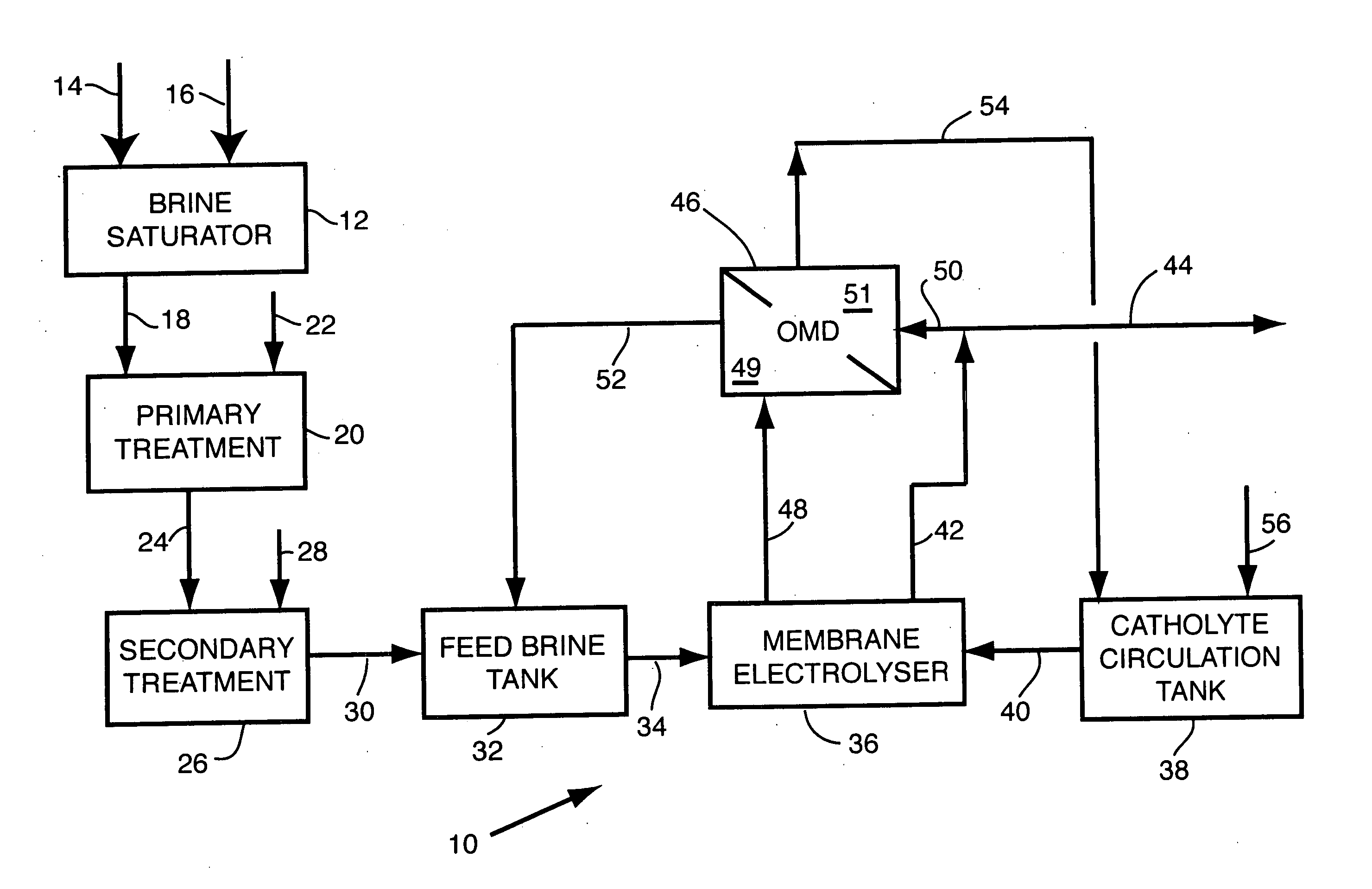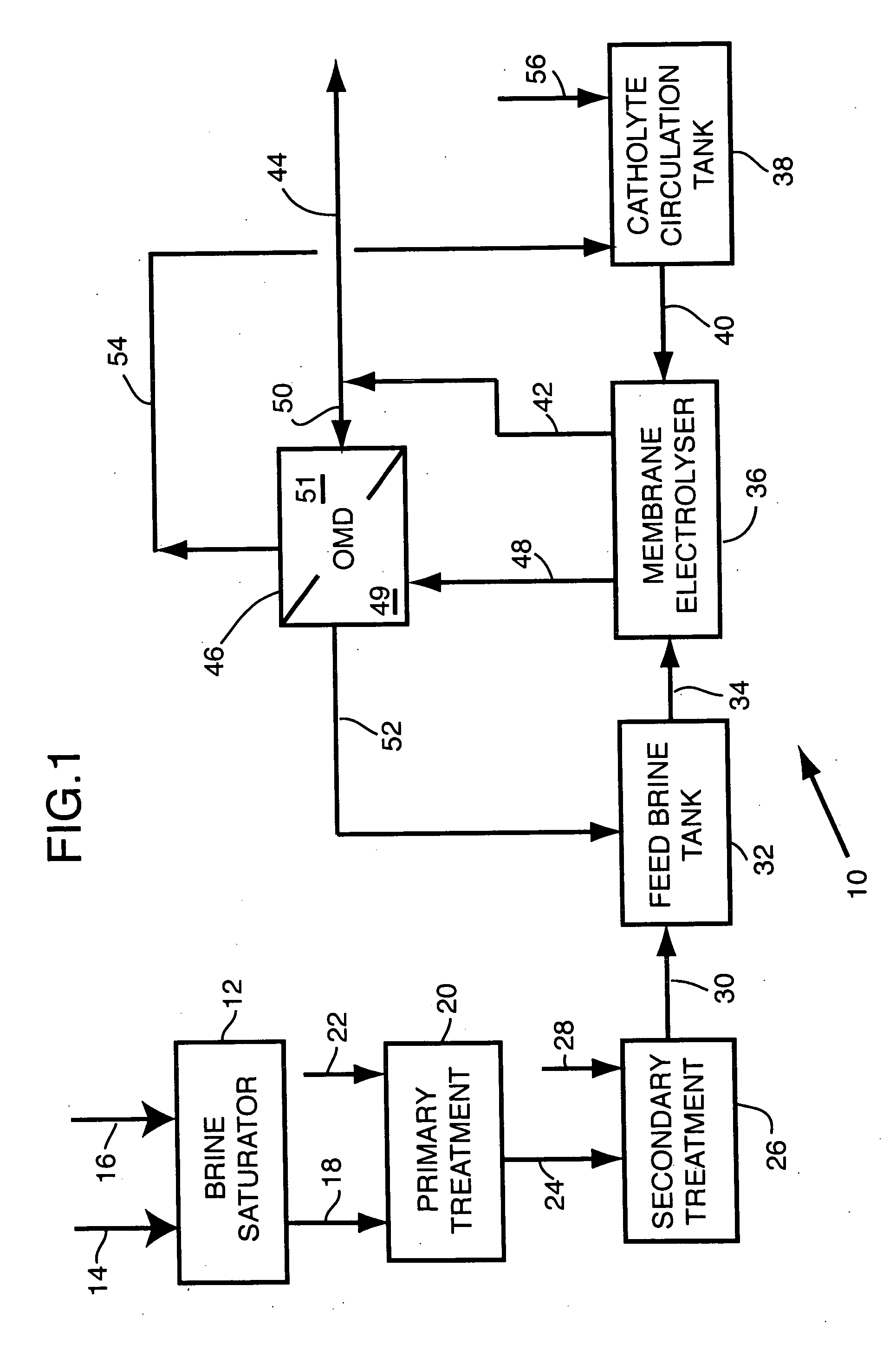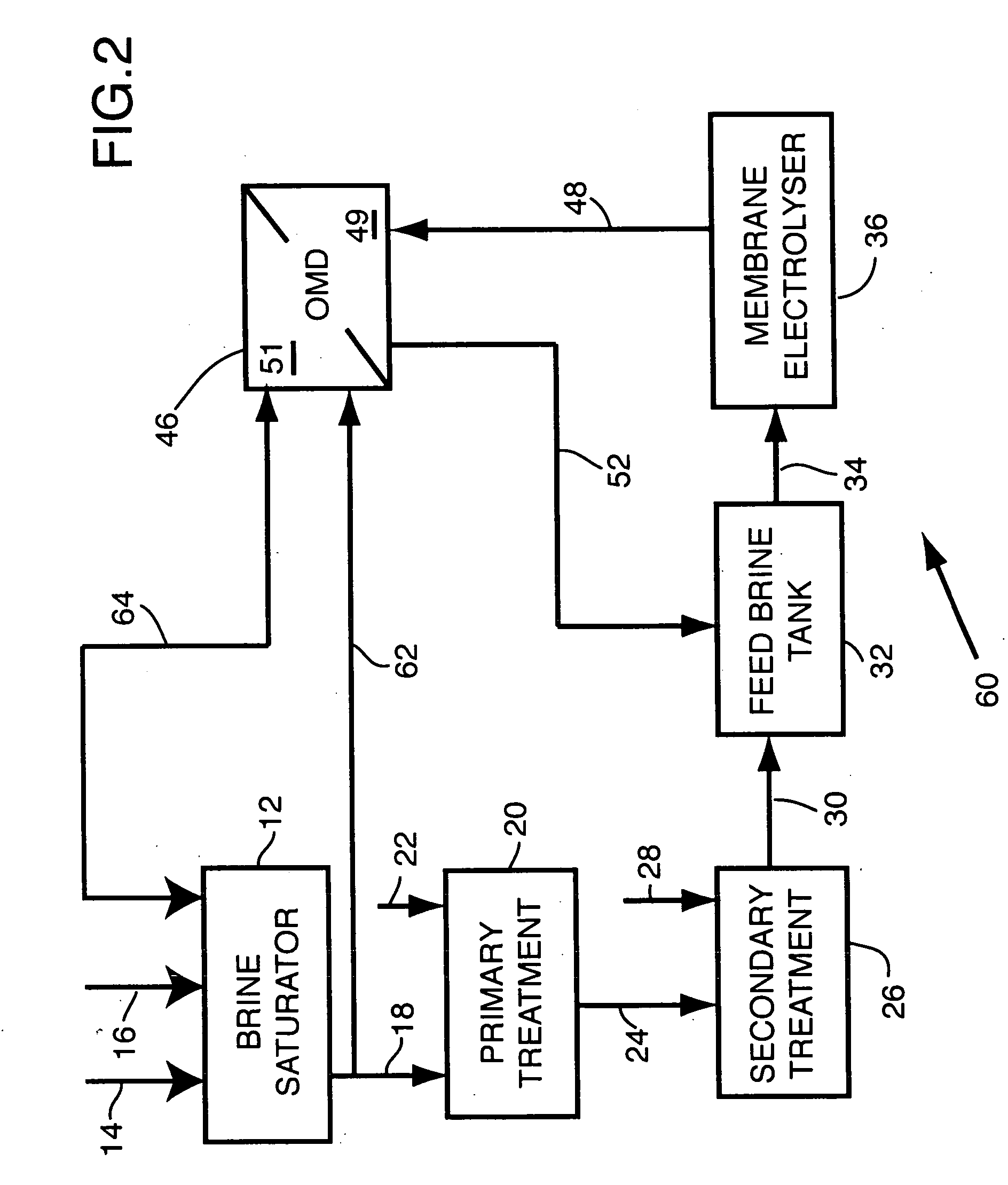Apparatus and method for osmotic membrane distillation
- Summary
- Abstract
- Description
- Claims
- Application Information
AI Technical Summary
Benefits of technology
Problems solved by technology
Method used
Image
Examples
example 1
[0094] Spent brine (18% w / w NaCl) was pumped on the shell side of Microza® unit at 2.7 ml / min (linear velocity: ˜0.5 cm / sec), while 30.5% w / w NaOH Receiver solution was pumped through the lumen side of the PVDF capillaries at 2.5 ml / min (linear velocity in each capillary ˜1.2 cm / sec). Spent brine and Receiver temperatures were varied but kept equal to each other. In the process the Spent brine became concentrated to the 25-26% w / w level. The estimated initial differential water vapor pressure difference (driving force) was 0.080 bar at 30° C. and 0.080 bar at 60° C., respectively. The measured water transfer rates were as follows:
Temperature, ° C.H2O transfer rate, kg / m2 hr220.42350.80451.00551.25651.50
example 2
[0095] Conditions were similar to that in Example 1 except that the temperature was fixed to 73° C. and the lumen side flow was increased to 7.6 ml / sec (˜3.5 cm / sec), while the shell side flow (Spent brine) was varied. The measured water transfer rates were as follows:
Shell side flow, ml / secH2O transfer rate, kg / m2 hr6.62.258.52.9010.03.30
example 3
[0096] Gore-Tex® tubular PTFE® membranes were used in a membrane contactor of the undisclosed flow-type configuration for OMD process. Some description of the membrane module and membranes are given in Table 1.
TABLE 1Gore-Tex tubular membranes and a membrane module used in theexperiments.Membrane form / materialTubes / PTFEActive area of the membrane module based on the1.1m2tube-sideActive tube length43.1cmPorosity of membranes˜50%Membrane tube ID˜0.55mmMembrane tube OD˜0.80mmMembrane tube thickness˜0.125mm
[0097] Spent brine (17.5 wt.% NaCl) was pumped on the shell side of the membrane contactor comprising Gore-Tex tubular membranes at a linear velocity of ˜7.4 cm / sec. Receiver solution comprising 30% NaOH was pumped through the tube-side of the PTFE tubular membranes at a linear velocity of ˜21 cm / sec per each tube. Spent brine and Receiver temperatures were varied but kept equal to each other (see a table further below):
Temperature, ° C.H2O transfer rate, kg / m2 hr501.24603.82705.5...
PUM
| Property | Measurement | Unit |
|---|---|---|
| Temperature | aaaaa | aaaaa |
| Temperature | aaaaa | aaaaa |
| Fraction | aaaaa | aaaaa |
Abstract
Description
Claims
Application Information
 Login to View More
Login to View More - R&D
- Intellectual Property
- Life Sciences
- Materials
- Tech Scout
- Unparalleled Data Quality
- Higher Quality Content
- 60% Fewer Hallucinations
Browse by: Latest US Patents, China's latest patents, Technical Efficacy Thesaurus, Application Domain, Technology Topic, Popular Technical Reports.
© 2025 PatSnap. All rights reserved.Legal|Privacy policy|Modern Slavery Act Transparency Statement|Sitemap|About US| Contact US: help@patsnap.com



